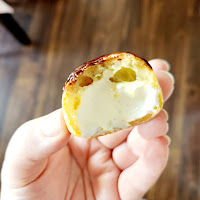The final section of Ewald Notter's The Art of the Chocolatier is focused on chocolate showpieces and includes a chapter specifically on creating a showpiece for competition. There are pages of colour theory, shapes and their meanings, and guidelines for size and proportion. The result is an excellent resource for the design and execution of a competitive chocolate showpiece.
Most interesting, perhaps, is Notter's advice for preparing for competition. He emphasizes that mental preparation is critical for success and that it's important to create a support network of friends, family, and coworkers. As one "trains" for competition (yes, trains), Notter suggests that one choose the right competition (level, style), gain experience by volunteering (or seeking out a mentor), research the venue and event (for supplies to bring, as well as temperature and humidity levels), learn about the judges (for their tastes and preferences), and understand the rules (theme, purpose, ingredients permitted, etc).
All solid advice. I admit, however, that I find the image of "training" for a chocolate competition to be a bit humorous. In my head, I see a Rocky Balboa-type getting ready for the fight of his life in the kitchen. The truth is, sometimes tempering chocolate can feel like a battle...
I would imagine that anyone entering a competition has to be confident that they can nail the temper of chocolate every time, regardless of the kitchen conditions. And this is something that only comes with repetition and time. I also expect that the various techniques to be employed would be executed over and over again to ensure success while under pressure. And part of the training would surely involve making various components within particular time limits to ensure the entire piece can be created, assembled, and finished in the time allocated. In short, I suppose practice would make perfect -- and go a long way to building that mental preparation and confidence required to perform under pressure.
In my opinion, however, Notter missed out on the true key to success: good footwear. I can say from personal experience that long hours on one's feet while working with chocolate can lead to excruciating back pain, so you wouldn't catch me in a chocolate competition without a trusty pair of Birkenstocks.
Actually, you'll never catch me in a competition. I abhor competition. I find watching competitions like Great Chocolate Showdown and School of Chocolate to be terribly stressful -- so I can't imagine what it would be like to actually be on the show, your every move and misstep caught on camera!
But that doesn't mean I wouldn't try making a chocolate showpiece. I could imagine doing one in the future as a fundraiser for a charity or a show-stopping dessert on a special occasion. Or just a random chocolate adventure! After all, this haunted house in Notter's book really speaks to me, so I may need to enlarge the templates provided and give it a go at some point in the future!






